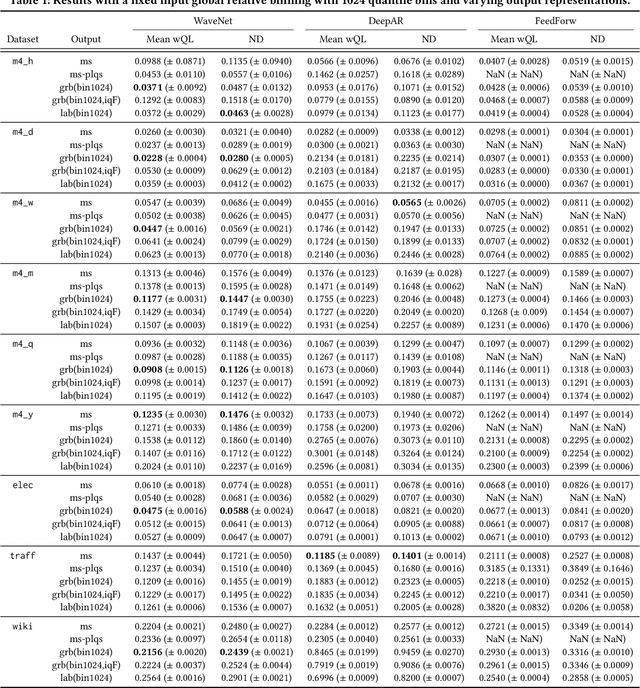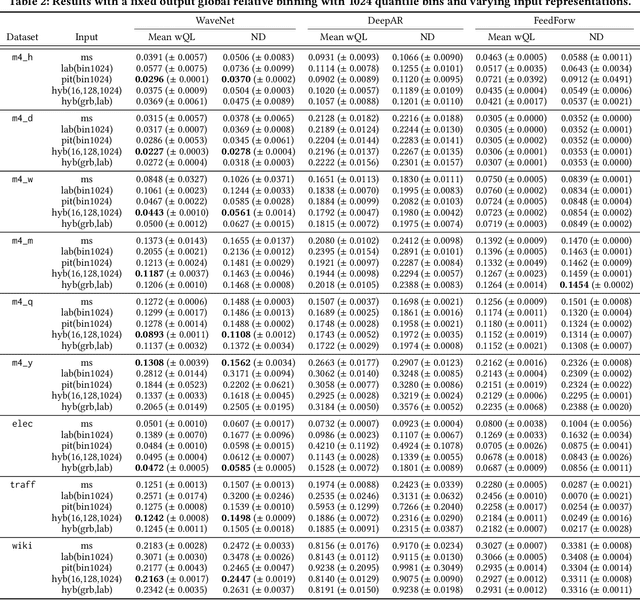The Effectiveness of Discretization in Forecasting: An Empirical Study on Neural Time Series Models
Paper and Code
May 20, 2020



Time series modeling techniques based on deep learning have seen many advancements in recent years, especially in data-abundant settings and with the central aim of learning global models that can extract patterns across multiple time series. While the crucial importance of appropriate data pre-processing and scaling has often been noted in prior work, most studies focus on improving model architectures. In this paper we empirically investigate the effect of data input and output transformations on the predictive performance of several neural forecasting architectures. In particular, we investigate the effectiveness of several forms of data binning, i.e. converting real-valued time series into categorical ones, when combined with feed-forward, recurrent neural networks, and convolution-based sequence models. In many non-forecasting applications where these models have been very successful, the model inputs and outputs are categorical (e.g. words from a fixed vocabulary in natural language processing applications or quantized pixel color intensities in computer vision). For forecasting applications, where the time series are typically real-valued, various ad-hoc data transformations have been proposed, but have not been systematically compared. To remedy this, we evaluate the forecasting accuracy of instances of the aforementioned model classes when combined with different types of data scaling and binning. We find that binning almost always improves performance (compared to using normalized real-valued inputs), but that the particular type of binning chosen is of lesser importance.
 Add to Chrome
Add to Chrome Add to Firefox
Add to Firefox Add to Edge
Add to Edge